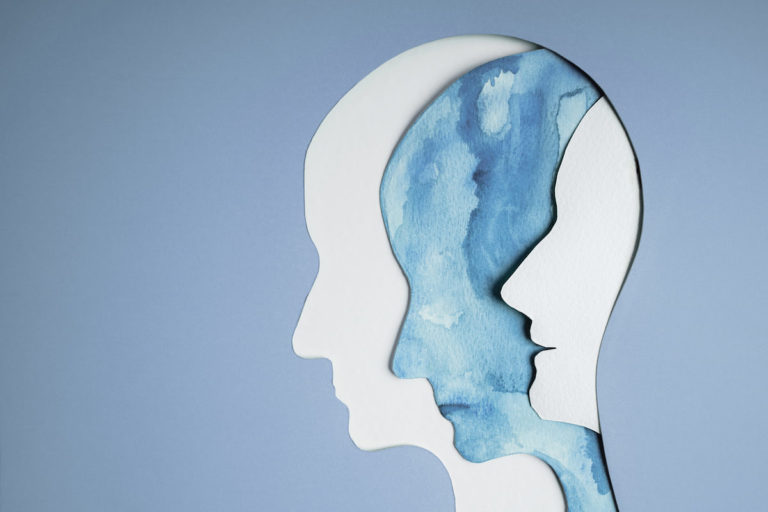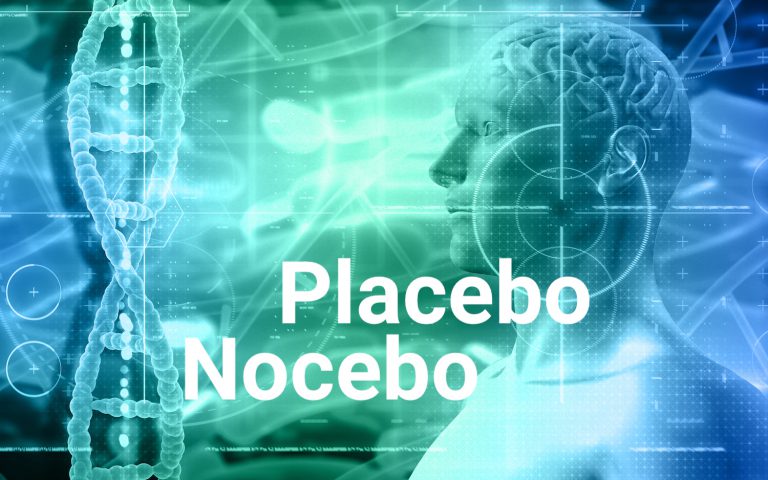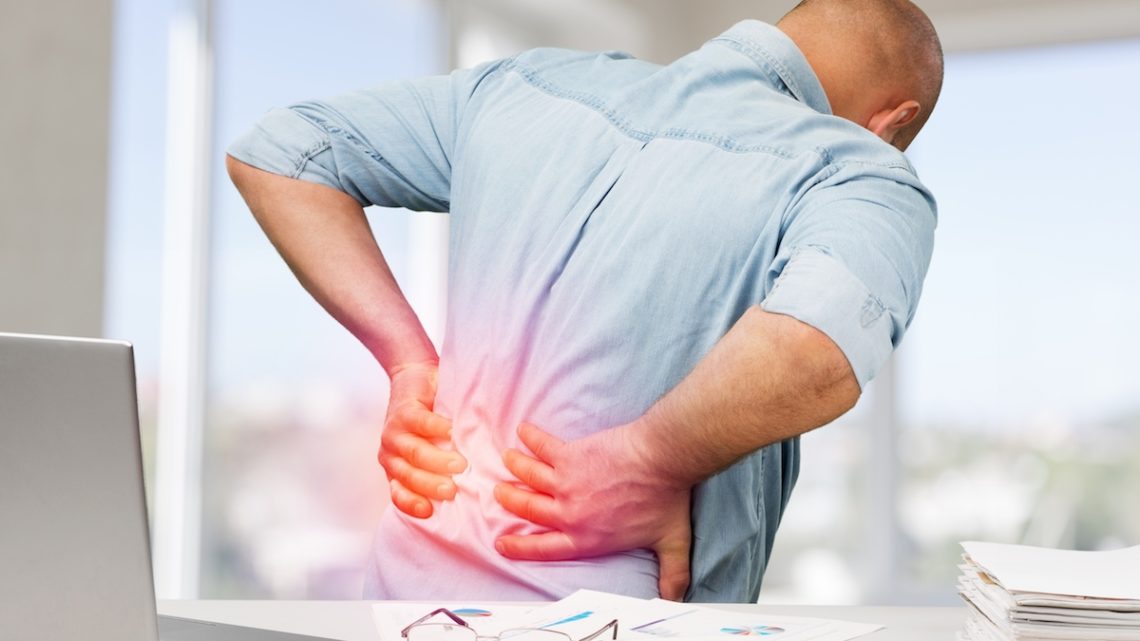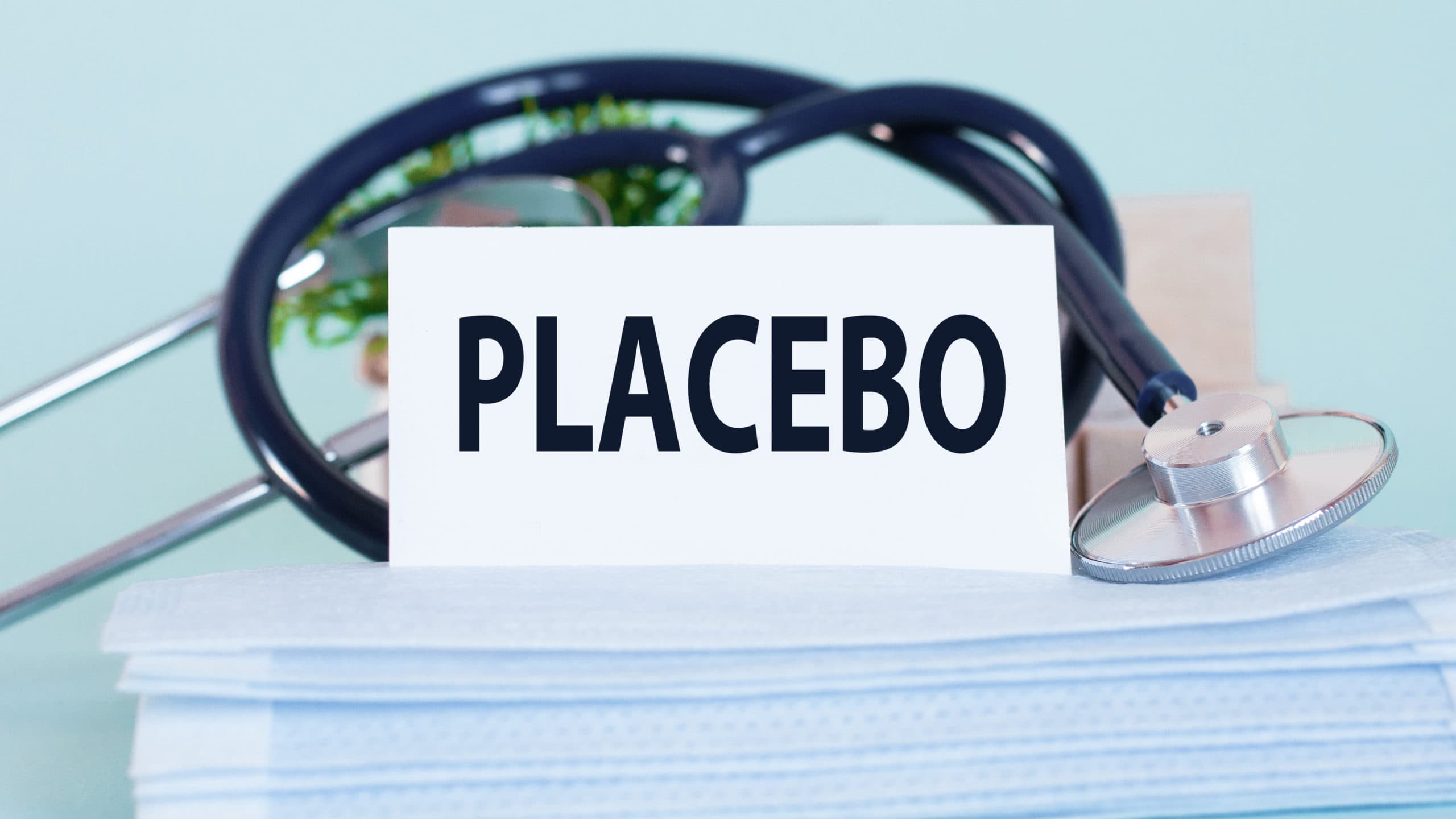Updated on 26. February 2022 from ÁYIO-Q Redaktion
Reading time: approx. 20 minutes
Out of the blue, pain in the back?
Extreme pain in the lower back, abrupt and relentless. Every movement, no matter how small, an ordeal. Was there something there before?
Maybe a little too heavy lifting lately, an unfortunate twisting movement, unaccustomed bending? Maybe also the usual movement out of bed in the early morning. Or maybe you have been sitting at your PC non-stop for the last few days?
Something like this can come out when the doctor asks patients with lumbago what happened in the past. As you can see: Little can be enough to trigger the unpleasant pain in the back.
Lumbago is a severe onset of back pain. The trigger is usually a stressful or unaccustomed activity of the trunk. Lumbago is usually harmless and usually gets better on its own. You can read more about it here: How does lumbago develop? When should I see a doctor about lumbago? What can you do about the symptoms?
- Description
- Signs & Symptoms
- Causes
- Diagnosis
- Conventional treatment & Duration
- Risk factors
- Natural & alternative therapy options
But what exactly is lumbago?
Lumbago is a very severe acute back pain. Various other technical terms: Lumbago or Lumbargia, diminished pain in the back. Fortunately, every second person has recovered after 7 days, 65 percent after two weeks and also 90 percent within four to six weeks.
According to a study from German back pain research, the “witch” catches up to 85 percent of the population at some point in their lives. It mainly affects people between the ages of 30 and 50 or even younger.
From the age of 50, lumbago occurs much less frequently, although older people increasingly struggle with back or lower back pain.
This circumstance is only seemingly contradictory. Because the back becomes stiffer over time, herniated discs, for example, occur much less frequently. These can become noticeable like lumbago. On the other hand, other signs of wear and tear on the spine increase with age, as do many diseases that can damage the bone system.
Disease-related, then often chronic back pain as well as lower neck and back pain are therefore in the foreground in older age.
What are the signs and symptoms of lumbago?
Lumbago often has an origin

In many cases, the back muscles have already been damaged for some time. The cause: lack of movement. The structures that ensure movement in the back do not interlock as they should: muscle mass is reduced or degraded, tendons are tense, the vertebral joints are not working properly, nerve fibres are irritated.
As a result, certain movements can suddenly cause an extremely agonising “blockage” at one point of this structure. This usually happens at the level of the lower spine.
Below this, at the sacroiliac joints – the so-called iliosacral joints – the communication of muscle tissue, tendons & co. can be disturbed when overloaded.
Symptoms of lumbago
The complaints of lumbago are mainly found in the lower lumbar region and above the sacrum – either centrally or slightly to the side of it. They can also radiate to various other parts of the body (especially the leg), as if one of the nerve roots in the lumbar region were damaged (pseudoradicular complaints).
The pain limits the mobility of the lumbar spine: Many sufferers can no longer bend over. Walking and standing can also hardly be performed due to the complaints. Pressure or knocks on the vertebral spinous processes trigger pain.
What are the possible causes of lumbago ?
If one studies the relevant scientific papers, one comes across a selection of descriptions of causes that can be roughly divided into 3 groups.
1. structural causes
Lumbago is usually blamed on structural damage to the bony and cartilaginous structures of the spine:
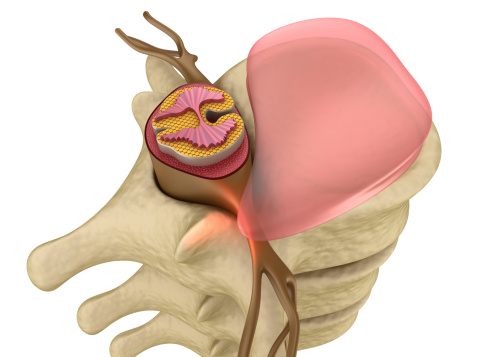
2. functional causes
Lumbago can additionally be interpreted from a functional problem. The functional causes of lumbago start with the trunk muscle mass:
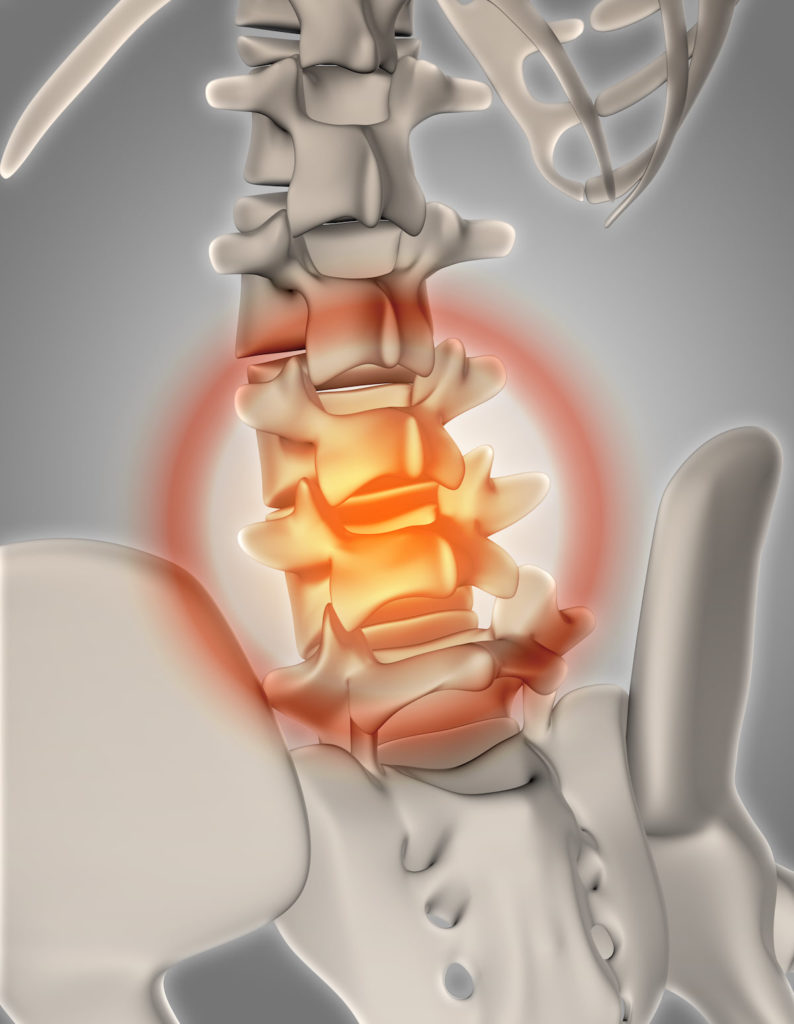
Roland Liebscher-Bracht mentions, for example, that consistent sitting without compensation shortens the hip flexor (musculus psoas major) in the front and increases the tension in the back extensor (musculus erector spinae) as well as in the gluteal muscles in the back, which puts considerable strain on the back. To protect it from overuse, lumbago urges immediate rest due to the alarming discomfort and automatic activity block. Regardless of possible structural damage.
3. various other possible causes
For the sake of clarity, it must be mentioned that a common medical thesaurus also considers malignant tumours in the abdominal region (intra-abdominal tumours) as very rare causes of lumbago.
Medical diagnosis of lumbago
When you consult a doctor about lumbago, he or she will usually be able to give you the medical diagnosis based on the signs you define in response to certain questions and a health examination. The medical diagnosis will certainly be “non-specific (or non-specific) acute low back pain”. Additional examination measures are not necessary in these harmless cases for the time being.
The doctor first has an in-depth conversation with the patient to take his medical history (anamnesis). Possible questions are:
- Where exactly do you have the complaints?
- How long have the pain conditions existed?
- Was there a particular trigger for the complaints?
- Is the pain localised or does it radiate to various other parts of the body (e.g. the leg)?
- What is the temporal course of the complaints (during the day, at night)?
- Do you have any other impairments (such as sensory disturbances in the legs, bladder emptying disturbances, etc.)?
- Have you ever suffered from back pain in the past?
- Are you dealing with a mental illness (e.g. an anxiety disorder or depression)? Do you suffer from anxiety, stress and restlessness or do you often feel tense/overworked?
Back and lower back pain that has a disease as its cause is called specific. This may be the case with complaints that last longer than 4 weeks or with acute problems in the context of lumbago. In this case, further investigations are needed, such as X-rays, perhaps an MRI or other imaging treatment, a neurological examination and probably laboratory tests.
If necessary, the first treating doctor will immediately refer the person to a clinic or specialist for a precise medical diagnosis and therapy.
Conventional therapy of lumbago
Those affected must maintain their usual daily tasks as far as possible – with the help of painkillers if necessary.
Medicines from the group of non-steroidal anti-inflammatory drugs (NSAID) such as Advil or Diclofenac are recommended for the treatment of lumbago. Occasionally, NSAIDs are not used because of their possible side effects (e.g. severe heart failure).
As a general rule, lumbago patients should only take painkillers when they are absolutely needed. In addition, the medication should only be taken for a short time and in as low a dosage as possible.
Duration:
The symptoms usually subside by themselves after a short time. As unpleasant as acute back pain may be, patience is the most important thing in the case of uncomplicated lumbago.
Are there any risk factors for lumbago?
The psychological state of the person affected is of crucial importance, as under certain circumstances it can favour the chronic consolidation (chronification) of back pain. This is especially true for patients who suffer from stress, Anxiety or even Depression. Also patients who face their complaints with vulnerability and pessimism, who see their own situation as catastrophic and/or take an exaggerated protective attitude, and who are also at high risk for chronic complaints.
10 Tips for Self-Help with Natural & Alternative Therapies
The simple procedures listed below can usually help people suffering from lumbago.
1. Relief in supine position
Temporary relief of the discomfort can usually be achieved with so-called step positioning: The person rests on their back. The legs are bent at the hips and also at the knees, for example by resting the lower legs on a chair or stool at the right height. This position relieves the back and the muscles in the lower back.
2. Discharge in prone position
Robin McKenzie, an effective physiotherapist from New Zealand, suggests the following treatment in the acute case of lumbago:
- Immediately lie flat on your stomach
- Every 2 hours, lie on your stomach and try to straighten your upper body 10 times in a row by leaning on your elbow joints Stay in this position for at least one minute
- If the discomfort increases in the prone position on one side, turn the hip slightly away from the discomfort
- Put a rolled up towel around your waist overnight for support
- Do not bend forward for 3-4 days and always lean on your elbow joints as described in point 2.
- Always ensure a correct resting position and use a so-called lordosis roll for support. The lumbar roll is a special cushion that can be placed between the lumbar spine and the back of the chair or safety seat and enables an upright sitting posture.
3. Application of heat or cold
You have lumbago for the first time? You probably don’t know yet whether heat or cold will do you good now. The most effective thing is to try it out!
If heat does you good, you can either apply a so-called heat spot from the drugstore to the affected area. Or you can warm the painful area with the help of a heat pad, a microwaveable mud pack or a warm cherry pit pillow.
If you opt for cold, it is best to use an ice-cooled cold pack, which is available at the pharmacy or drugstore. Cooling ointments or gels can also help to relieve the discomfort.
Natural oils, ointments or extracts for pain relief4;
Chilli oil
The (self-)massage therapy with chilli oil provides warmth and can also relieve tension in the back. But be careful! Do not get the oil in your eyes or on mucous membranes and clean your hands carefully after use.
Mint
The refreshing pungency of peppermint also has a restorative effect on back pain. You can make a balm against the discomfort yourself as follows: heat three grams of beeswax, two grams of lanolin and 25 millilitres of vegetable oil in a water bath and melt.
Horseradish
“Hot makes you healthy” also applies to the time-honoured household remedy horseradish. To make a paste against back pain, mix equal parts of fresh grated horseradish with wholemeal flour.
Anise
“For a supposed lumbago tea, mix 2 parts each of star anise and willow bark, one and a half parts of mullein flowers and devil’s claw, and one part each of lavender flowers, ivy leaves and fiddlehead. You need one tablespoon of the mixture per cup. Pour warm water over it and let it steep for ten to 15 minutes. Three cups per day relieve malaise and severe stress.
Willow bark
The pain-relieving active ingredient of willow bark was, among other things, the model for widely known painkillers. As a natural solution, it is also good for the back in various ways: applied directly as a shower, internally as a tea or, like hay flowers, dried as a bath additive.
Nettle
“Nettle whipping” is not only good for rheumatism. The same natural home remedy also shows excellent effects in lumbago (lumbar syndrome), because the substances of the medicinal plant promote blood circulation and thus loosen the muscle mass.
St. John’s wort
St. John’s wort is not only effective against depressive moods, but also against strong tensions of the muscle tissue caused by lumbago. However, the red oil should only be used for mild massages and should not be pressed or rubbed too hard. Gentle circling with the fingers, on the other hand, warms up the muscles, loosens and does good to irritated nerves.
Wormwood
Hildegard von Bingen already advised rubbing wormwood on the affected back area (mostly in the lumbar region) to relieve severe lumbago pain. The medicinal natural herb promotes blood circulation.
- Arnica ointment helps to loosen muscle mass and relieve stress
- Beinwellsalbe helps to regenerate overstretched and damaged tendons and ligaments and ensures that the pressure on the muscle tissue recovers faster
Hot bath or shower5;
As soon as you can move again, take a long, warm bath or shower!
A hot bath alone will certainly relieve your back. With an addition of well-scented hay flowers, it works twice as well. It is optimal if the water in the bath is about body temperature (36 to 37 degrees) and the bath lasts a maximum of 20 minutes.
6. Dorn therapy
This is how the Dorn method works;
Physiotherapists who work according to the Dorn method run their thumbs along the patient’s spine. In doing so, they must really feel even the smallest deviations from the ideal position. Tilted or misaligned vertebrae are pushed together with the pressure of the thumb and, if necessary, brought back into the correct position.
Dorn method – from the bottom up
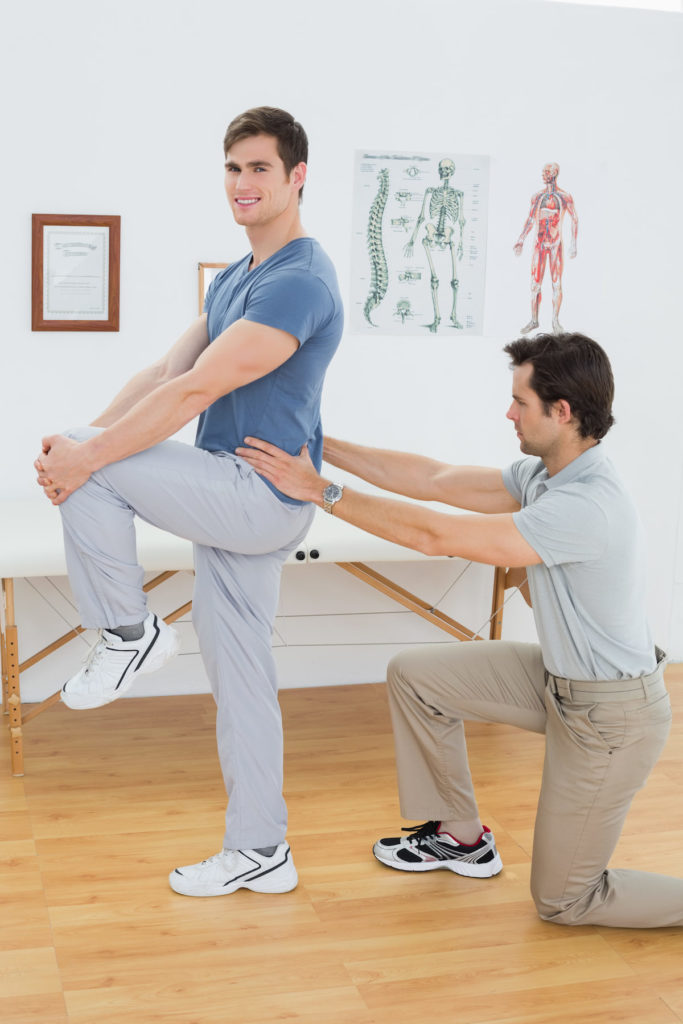
During therapy according to the Dorn method, the specialist always first checks whether the length of the patient’s two legs is identical. This is not the case with many people. In the first step of the treatment, any differences in leg length are determined and their effects corrected and eliminated. Then the person is examined from the ankles upwards to the foremost cervical vertebra, the atlas vertebra. As a rule, there are deviations in the area of the pelvis due to the different length of the legs and the resulting inclination of the spine. The therapist treats these at the same time with the Dorn technique. In this way, not only the complaints of lumbago are eliminated, but also the causes that led to it.
The Dorn Method offers help for self-help
The representatives of the Dorn method align the affected joints of their patients, but this is not quite the end of the job. Dieter Dorn and also the specialists who work according to his method point out that the patients are asked to actively participate in the process of their recovery.
Physiotherapists who work according to the Dorn method guide their thumbs along the patient’s spine. During the treatment according to Dorn, the specialist always checks first whether both legs of the patient are the same size. Dieter Dorn and also the specialists who work according to his method attach importance to the fact that those affected should actively participate in their recovery.
7. Homeopathy for lumbago
Experience has shown that homeopathy can be a really good solution for acute complaints. A great understanding of the remedies is needed for the right choice of treatment and also the dose.
- Aconitum D6: e.g. for damp sweats
- Arnica D6: e.g. for active overexertion.
- Berberis D6: e.g. if you have a stinging, little radiating discomfort that gets worse when you stand up.
- Bryonia D6: e.g. if you complain of stinging, tearing pains and any kind of movement and also heat only makes everything worse.
- Rhus-toxicodendron D6: for example, if the discomfort is aggravated by activity after a previous injection pain and you are sensitive to damp and cold weather.
Allow 5 globules to dissolve under the tongue every 15 minutes. If there is no improvement after 2 hours, you can stop the respective solution and try another suitable remedy.
8. Acupressure – a therapeutic technique of conventional Chinese medicine (TCM)
Since only the fingers are needed for the application of acupressure, this technique is considered well suited for self-treatment. In addition, acupressure offers the advantage that you can apply the finger pressure anywhere yourself. The massage therapy of painful areas, for example in the shoulder or neck area or a strong pressure on the forehead in case of migraine, is already considered a preliminary form of acupressure.
There are four types of treatment:
- Press
- Rubbing
- Kneading
- Knock
Another advantage: While acupuncture requires a therapist with several years of training, acupressure can also be performed by laypeople. If you treat the wrong acupressure point, this does not have to be bad – only the desired effect will fail to appear.
Acupressure – this is how it is done
There are numerous instructions which parts of the body are the pressure points for which effects according to the TCM trainings. In preparation, it is advisable to lie on the stomach for a short time and relax. Then one should look for the painful point and place the fingertips firmly on it. The appropriate points should be found by carefully pressing on the spot indicated in the instructions until one hits a really pain-sensitive spot. If there is no painful spot at the indicated location, one should still treat this area with the methods shown.
9. De-acidification of the body – to bring the acid-alkaline balance into order
Excess acids have an aggressive effect in the body. They cause the tissue to harden and become inflamed. The so-called myogeloses (hardening of the muscle tissue), which can also be felt again and again with lumbago, develop more easily.
Chronic hyperacidity is therefore one of the main causes of lumbago. A reliable deacidification programme consisting of an alkaline-surplus diet is therefore an essential step in preventing and alleviating lumbago.
A balanced diet should consist of at least 80 percent alkaline-rich foods and no more than 20 percent acidic foods. An alkaline-surplus diet is therefore essential.
10. Yoga

Especially in spring, lumbago patients storm the waiting rooms, as their backs are not yet used to an active day in the garden or a spring cleaning after the rather “leisurely” winter months. For lumbago patients, in addition to light exercise such as walking, unique flow yoga exercise series are ideal to relieve the pain, stabilise the back in particular, and make it stronger and more mobile to maintain the deep-seated muscle tissue.
3 flow yoga exercises that can be used for pain relief
The cat and the cow
Benefits: Gently stretches the back up and down. This reduces pressure on the vertebrae, the spine remains flexible, back pain decreases. Excellent for prevention.
How to do it: Stand on a yoga mat in a quadruped position, knees hip-width apart, hands shoulder-width apart. Hips over knees, shoulders over wrists. Press the fingers wide apart into the floor covering, head still in extension of the spine.
Cow: Hold arms outstretched, inhale, lower abdomen. Push the upper body forward, pull the shoulders back, look straight ahead.
Cat: Exhaling gently pull the belly button back, align the hips, round the upper back, pull the shoulder blades apart. Repeat both figures several times alternately, each time in combination with the breathing.
Archery
Benefits: Loosens the muscle tone in the posterior spine, improves its mobility, releases blockages in the vertebrae, reduces discomfort there.
How to do it: Stand straight, feet hip-width apart. Stretch arms forward at shoulder height, place hands one inside the other. Slowly rotate the best arm as far back to the right as possible, the left hand moving up along the corresponding arm until it rests on the shoulder of the best arm at its maximum rotation. The gaze remains fixed on the right man. Hold for 2 minutes, opposite.
The child
Benefits: From the neck to the sacrum, all back muscles are stretched, stress and congestion are released.
How to do it: Sitting on the heels on a yoga exercise mat, bend the upper body forward, the forehead touching the floor. The hands rest freely side by side on the floor. The neck is stretched, the shoulders are relaxed.
For each exercise you should do up to 10 repetitions with 20 to 30 seconds of tension each. Breathing is additionally important in this exercise. When you go into tension, breathe in deeply and gradually, and when you step back, breathe out. Crucial: Avoid some typical yoga exercises such as the “cobra”, where you get into a tight hollow back.
11. Acupuncture
Acupuncture can also help relieve the pain through targeted needling.
12. Radon Heat Therapy
This treatment is suitable for rheumatic diseases, diseases of the bone and joint system, the respiratory system and the skin. There are numerous scientific studies that confirm the success of radon therapy in terms of natural reduction of pressure pain waves, severity of discomfort, functional limitations as well as the use of medication.
The success of radon heat therapy is based on a mixture of slight overheating, high humidity and absorption of radon through the skin and also the lungs. Radon releases light alpha rays in the body that both stimulate the cellular repair systems and switch on anti-inflammatory carrier substances. This increases the core temperature of the body, the muscles relax and the micro-organism absorbs the natural painkiller radon much better.
Tips to finish
A back-friendly design of the workplace is actually a matter of course. For sports enthusiasts, it is important not to overdo it and to warm up and stretch the muscles – including those of the back – before every sporting activity. It is also advisable to know how to better deal with stress and anxiety in the long term.
Stress reduction through breathing exercises or meditation: Healthy through mindfulness
Immersing oneself in oneself used to be considered mystical spinning. In the meantime, the exercises have actually become an indispensable part of behavioural, pain and addiction therapy.
Make sure that you do not let worries drive you in your free time. Embracing “positive stress” helps you to cope better with anxiety and perhaps also to find “difficult” situations motivating.
FAQ
Lumbago usually gets better on its own. Do you need treatment?
Lumbago does not always require treatment. Often a relieving environment helps. In addition, warm baths can be helpful, but also various “home remedies” that do you good and relieve the discomfort.
When is a visit to the doctor necessary?
If the pain does not decrease after a few days, you should see your family doctor. After that, therapy may be useful.
What medicines are used for lumbago?
Painkillers can be used for a short time, as well as medicines that relax the muscle fibres. These are not absolutely necessary, but reduce the duration of suffering and help the affected person to cope with everyday life more quickly. You should discuss the use of medication with your family doctor.
What negative effects can these medicines have?
If taken for only a short time, these medicines are very well tolerated. Some can damage the stomach lining. Stronger drugs can also impair your ability to drive. It is best to ask your family doctor for more information.
How exactly is the cause of lumbago treated?
Where lumbago comes from cannot be determined. In view of the usually rapid improvement, the cause is usually insignificant.
What therapies are recommended?
The range of therapies is huge and it is more than difficult to suggest individual types of treatment in the following. Important benchmarks are that one relies on the specialist and that the procedures make sense.
What measures are recommended to prevent lumbago?
The steps typically recommended for back problems apply. It is also important to lower any kind of existing overweight as well as to avoid long, undesirable poses such as sitting at work without a break.
ICD codes for this condition: M54.5
ICD codes are internationally valid codes for medical diagnoses. They can be found, for example, in doctors’ letters or on certificates of incapacity for work.
The web content of ÁYIO-Q.com is for your information and in no case replaces a personal consultation or treatment by a qualified physician. The contents of ÁYIO-Q.com cannot and must not be used to make independent diagnoses or for self-medication.
Sources:
- Schmidt CO, Raspe H, Pfingsten M, et al. Back pain in the German adult population: prevalence, severity, and sociodemographic correlates in a multiregional survey. Spine (Phila Pa 1976). 2007;32(18):2005-2011. doi:10.1097/BRS.0b013e318133fad8
- Bach SM, Holten KB. Guideline update: what’s the best approach to acute low back pain?. J Fam Pract. 2009;58(12):E1.
- Robin A. Mckenzie, Mckenzie Institute International, Treat Your Own Back 9th Ed, ISBN 0-9876504-0-8, 2011 Edition
- Acupressure points against lumbago, on https://akupressurpunkte-liste.de/, accessed 27.12.2021
- Radon as a pain-relieving natural remedy, G. LIND-ALBRECHT, at https://link.springer.com/, accessed 27.12.2021
- Erickson BE. The therapeutic use of radon: a biomedical treatment in Europe; an “alternative” remedy in the United States. Dose Response. 2006;5(1):48-62. Published 2006 Sep 23. doi:10.2203/dose-response.06-007.Erickson
- Annegret F, Thomas F. Long-term benefits of radon spa therapy in rheumatic diseases: results of the randomised, multi-centre IMuRa trial. Rheumatol Int. 2013;33(11):2839-2850. doi:10.1007/s00296-013-2819-8

